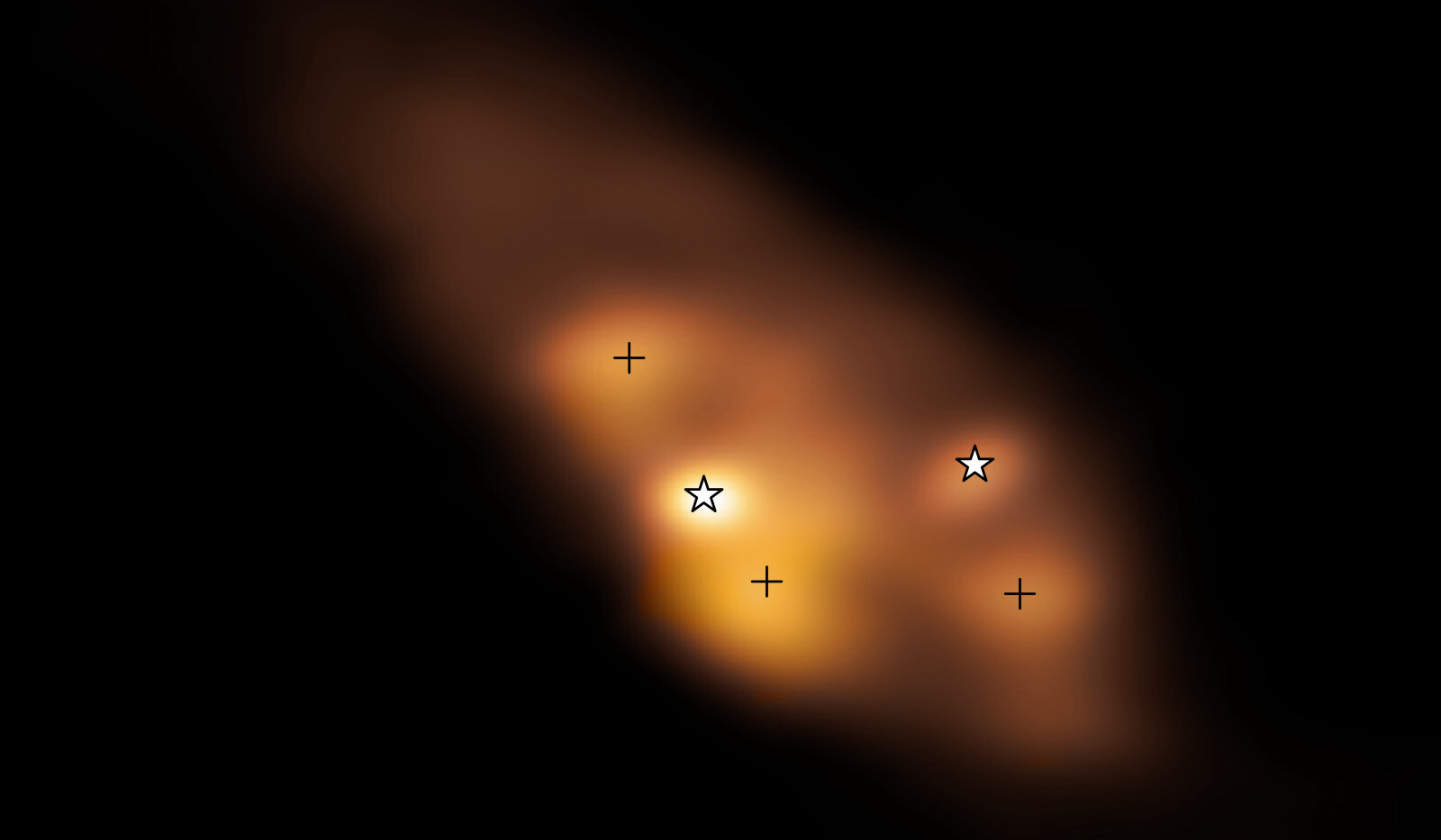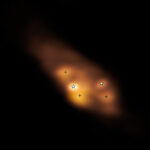Hotspots found around young binary stars
This Picture shows the very early stages of a binary star system with some intriguing features. It’s a radio image taken with the Atacama Large Millimeter/submillimeter Array (ALMA). The two young stars, or protostars –– marked with star symbols –– are surrounded by a dusty disc. The colour represents the temperature distribution of the protostars and the surrounding area, with brighter yellow colours representing higher temperatures. There are three clumps of hot dust far away from the protostars, marked with crosses, but what’s heating them?
A recent study, led by Maria Jose Maureira at the Max Planck Institute for Extraterrestial Physics in Germany, suggests that these regions are not only heated by the protostars but, most likely, also by shockwaves, similar to the ones produced when an airplane travels faster than the sound speed through air. These shocks can help enrich the gas in the disc with complex organic molecules at early stages, which could be passed on to nascent planets. The high temperatures in these shocks can also alter how dust particles stick together, changing how early the formation of planetary cores can occur.
Credit: ALMA (ESO/NAOJ/NRAO)/Maureira et al.

